12 of the best vegetables to grow in pots – easy crops for spaces of any size
There is a wide world of vegetables that can be easily grown in pots in your yard, on a deck, or even on a balcony
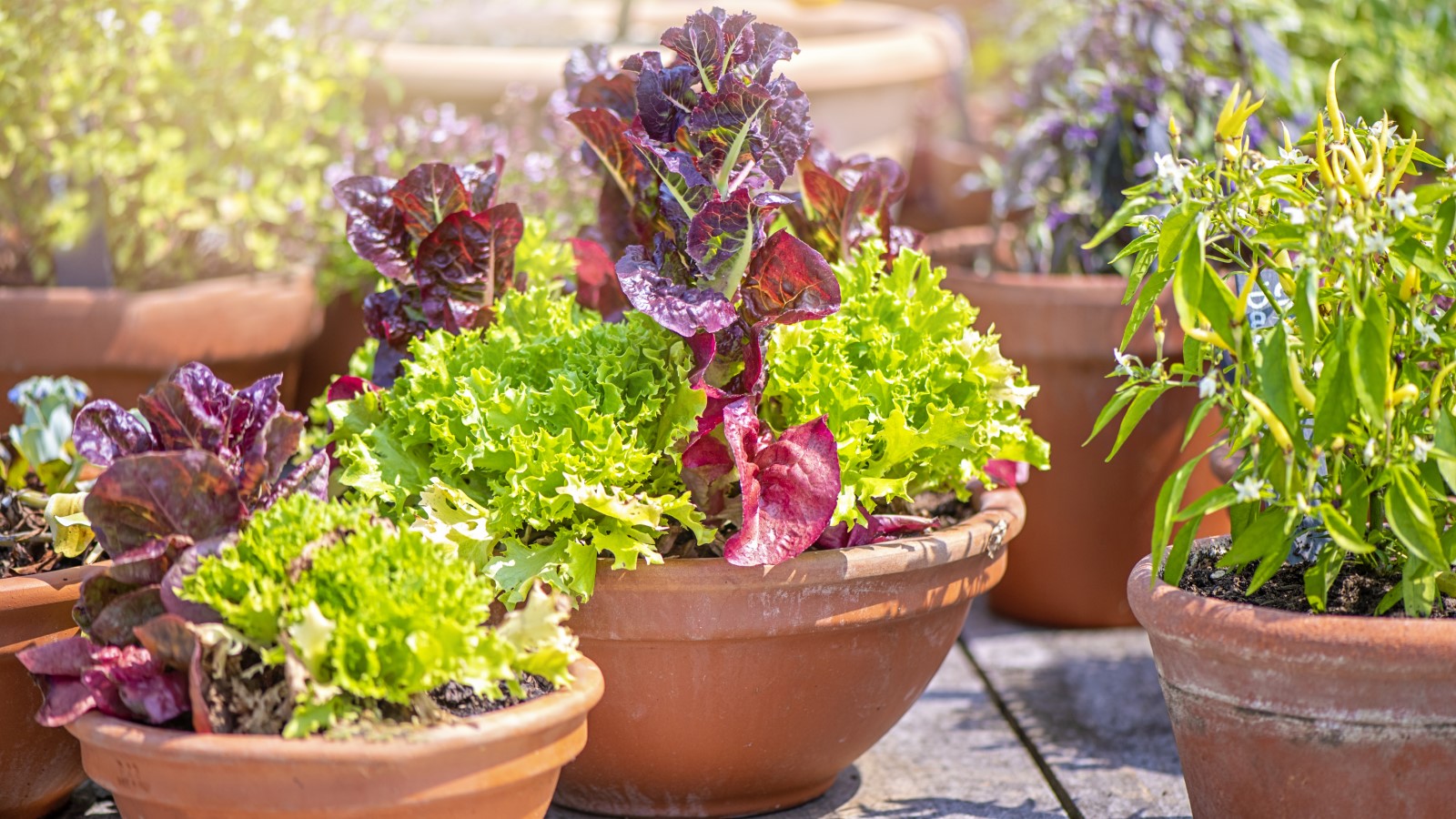

There is a wide selection of vegetables that will happily grow in pots and provide you with a fantastic harvest. From small radishes to long cucumbers, from potatoes growing in the soil to tall beans climbing poles, there is such a range of options available for anyone wanting to grow edibles in a vegetable container garden.
During my days as a working kitchen gardener, I mainly grew vegetables outdoors in the ground, but the heat-loving crops such as tomatoes and peppers were grown in pots in the greenhouse. At home, for many years I had a courtyard garden with no beds so I focused solely on growing my vegetables in pots. I experimented with growing as many vegetables as I could in pots in my small space.
When it comes to choosing the best vegetables to grow in pots at home, the main focus should be to grow crops that you and your household eat. With such a range of vegetables that can thrive in pots, there are bound to be ones that will work for you.
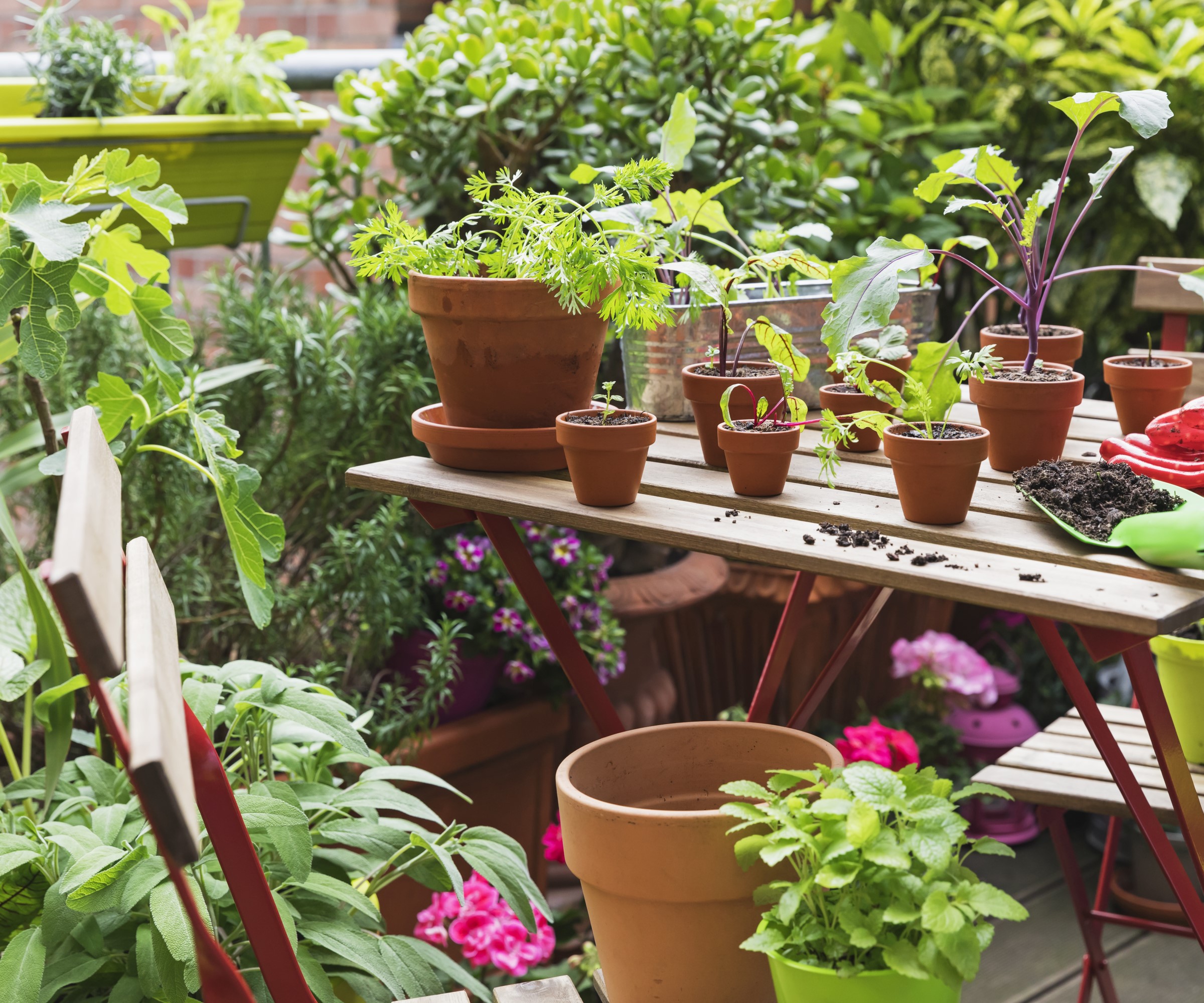
Vegetables can be grown in pots in a balcony garden
Easy vegetables to grow in pots on a patio or balcony
We take a closer look at 12 of the best vegetables to grow in pots, whether it is in your backyard, on a deck or patio, or even on a balcony. It includes looking at the pot size required, the ideal location to place your pots so your plants will thrive, and when you should expect a harvest.
It should be remembered that watering plants and feeding plants is more important when growing in pots than in the ground. That is because there is a limited amount of soil in the pot to hold moisture and provide nutrients to the plants. All of the crops below want to be grown in good-quality potting soil that is rich and well-draining and all pots need holes for drainage.
1. Potatoes
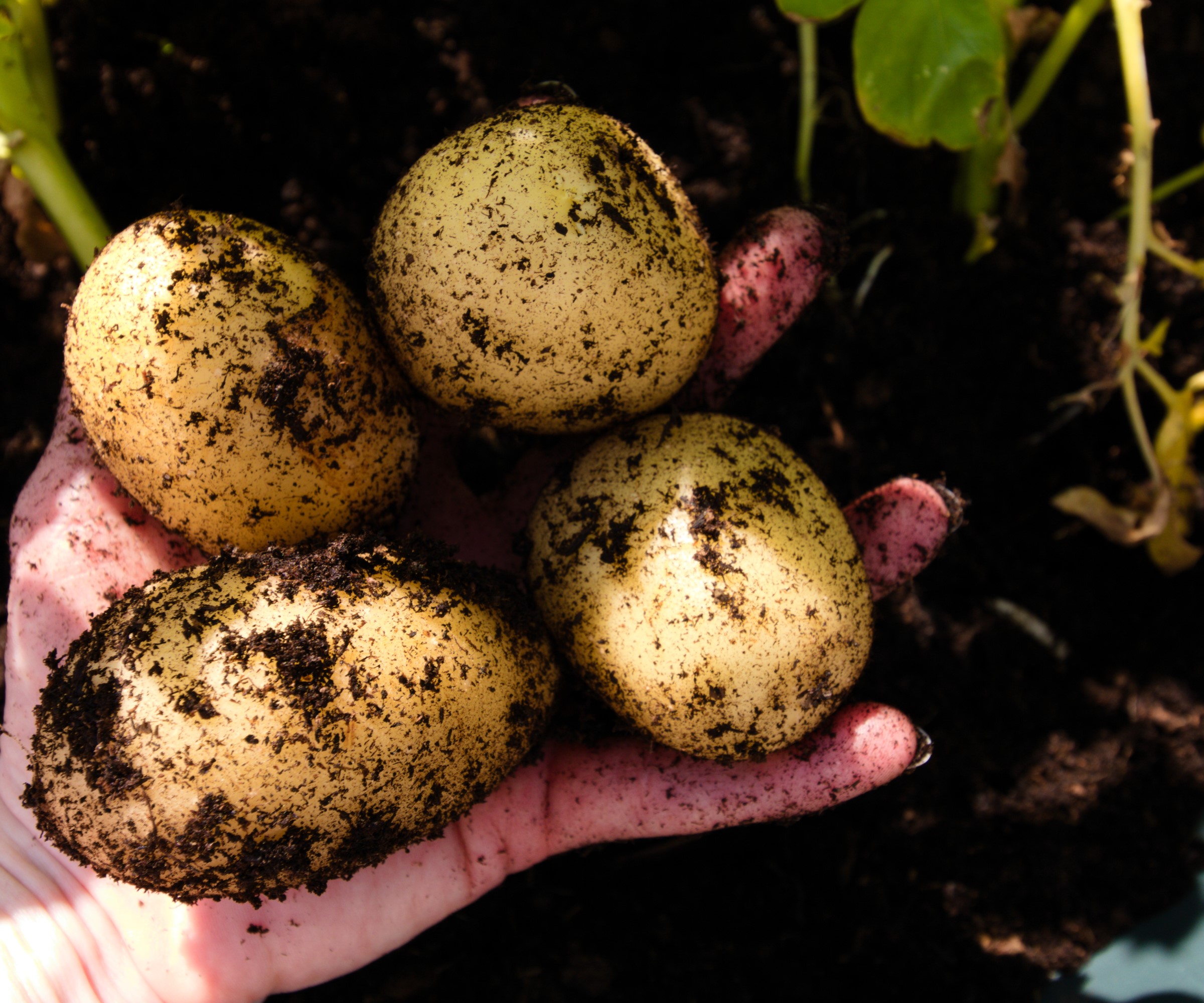
Potatoes can be grown successfully in pots, buckets, or bags
- Aspect: Full sun
- Pot size: At least 12 inches wide and 12 inches deep
- Harvesting period: Late spring onwards
Potatoes are simple to grow and harvest in pots – they top the list of easy vegetables to grow in pots. There is a range of potato varieties to choose from and all can be grown in pots.
To grow potatoes in a container, place 2 or 3 seed potatoes on top of a few inches of soil and cover with another few inches. Place the pot in a light and sunny spot and water well. Top up the container as the plant pops through until the container is full. And to harvest potatoes, you simply need to tip the contents of the container out and pick the potatoes from the soil.
2. Beans
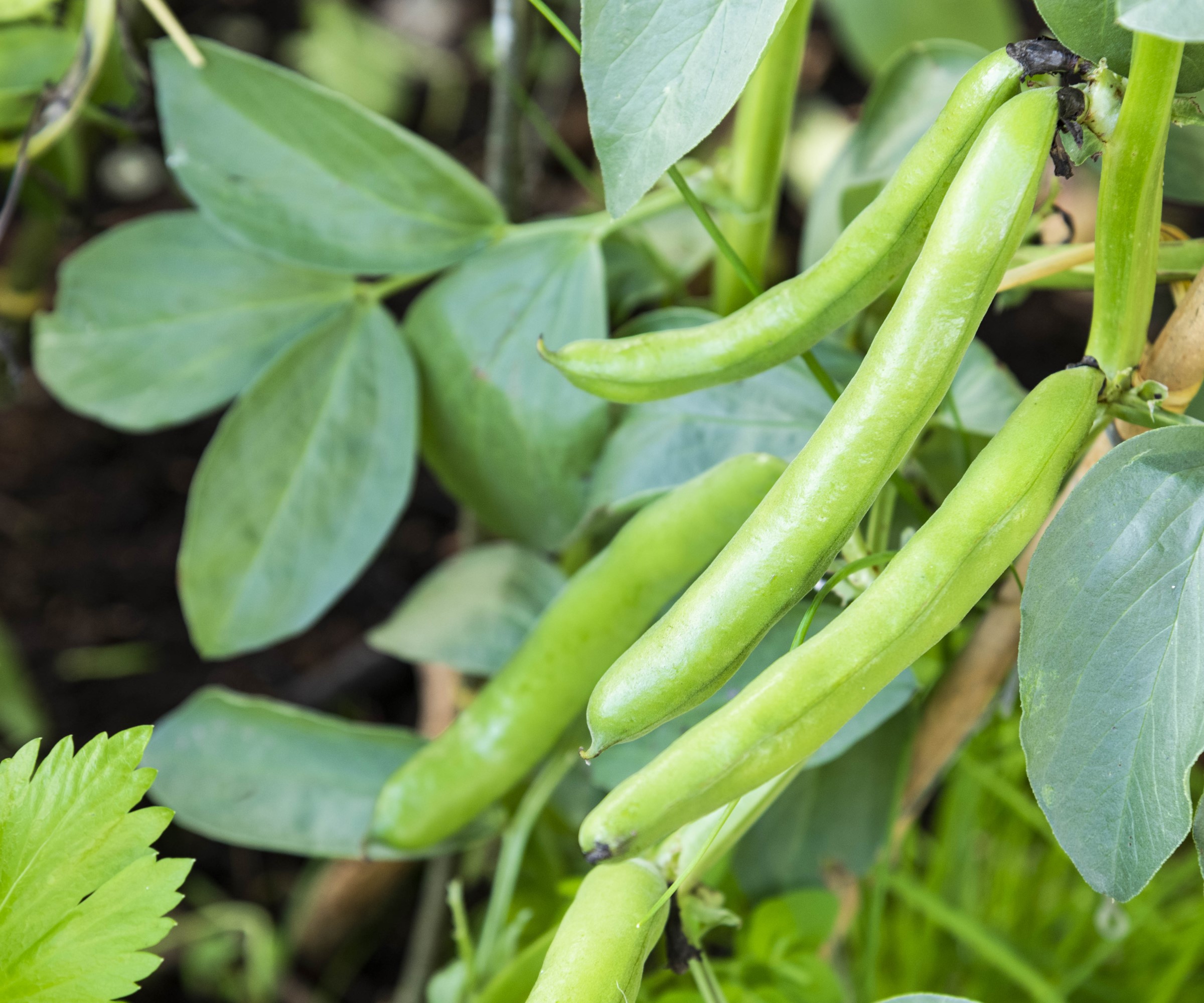
Fava beans need to be given support unless they are dwarf varieties
- Aspect: Full sun
- Pot size: At least 12 inches wide
- Harvesting period: Summer onwards
Beans are a great vegetable to grow in pots, and there are a range of different varieties you can choose. You can grow fava beans in pots – with dwarf cultivars available that are perfect for containers – and also pole beans.
The latter will require larger pots, around 18 inches, and support such as poles or a trellis put in place. They can even be used to take advantage of existing fences or trellises to climb up.
3. Peas
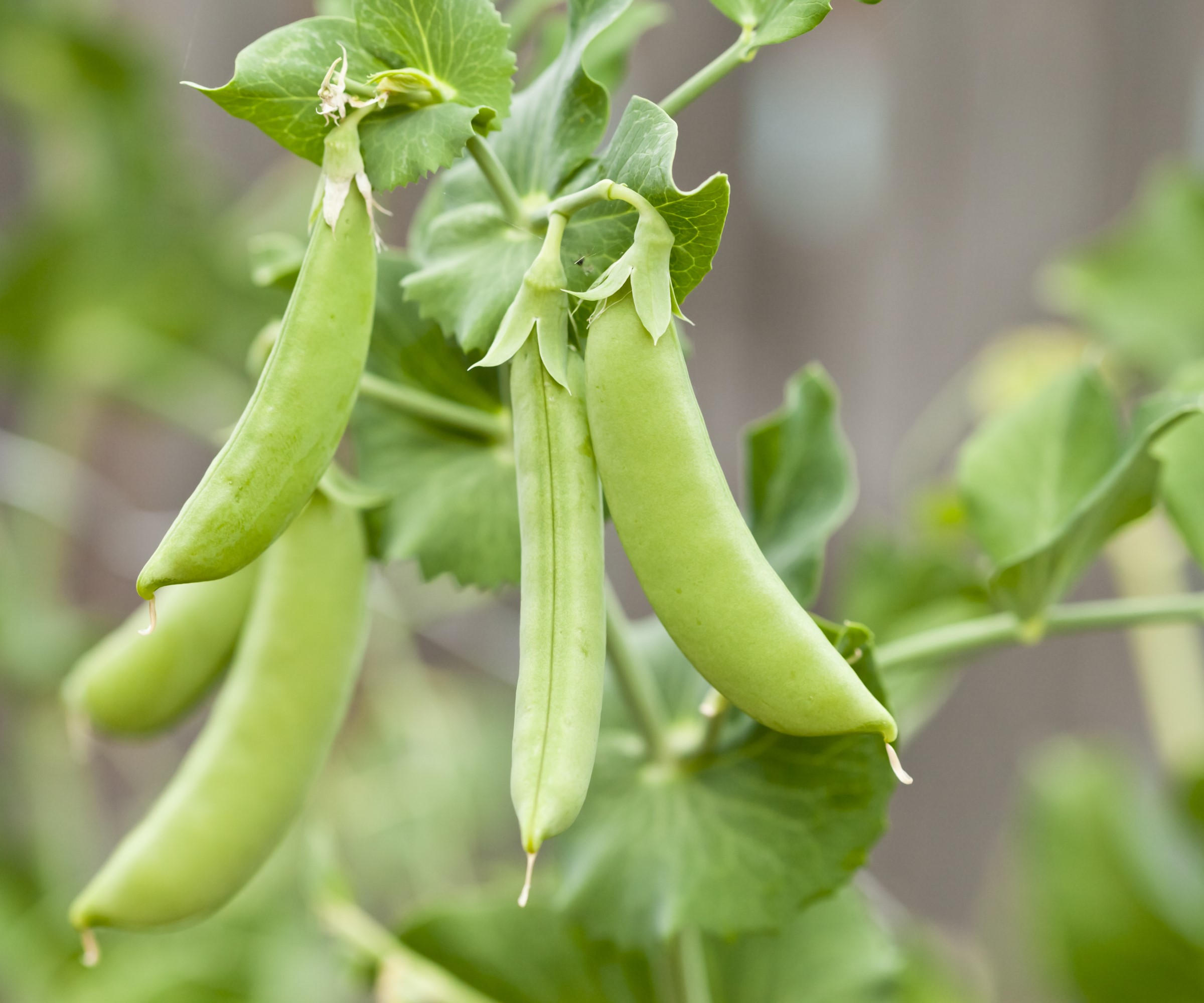
Sugar snap peas are wholly edible and a delicious sweet treat straight off the plant
- Aspect: Full sun
- Pot size: At least 12 inches
- Harvesting period: Summer
Peas, mangetout, or sugar snap can be grown in pots in small spaces and will require some support as they grow. For example, it can be a wigwam made of twigs or bamboo poles. You can get dwarf or bush varieties of peas that will require less support.
Fresh peas are delicious picked off the plant and should be picked regularly to ensure a continuous harvest throughout the summer.
Peas in pots are best fed with a tomato fertilizer (such as Tomato Tone, available from Amazon) throughout the season to encourage a succession of flowers and pods.
4. Radish
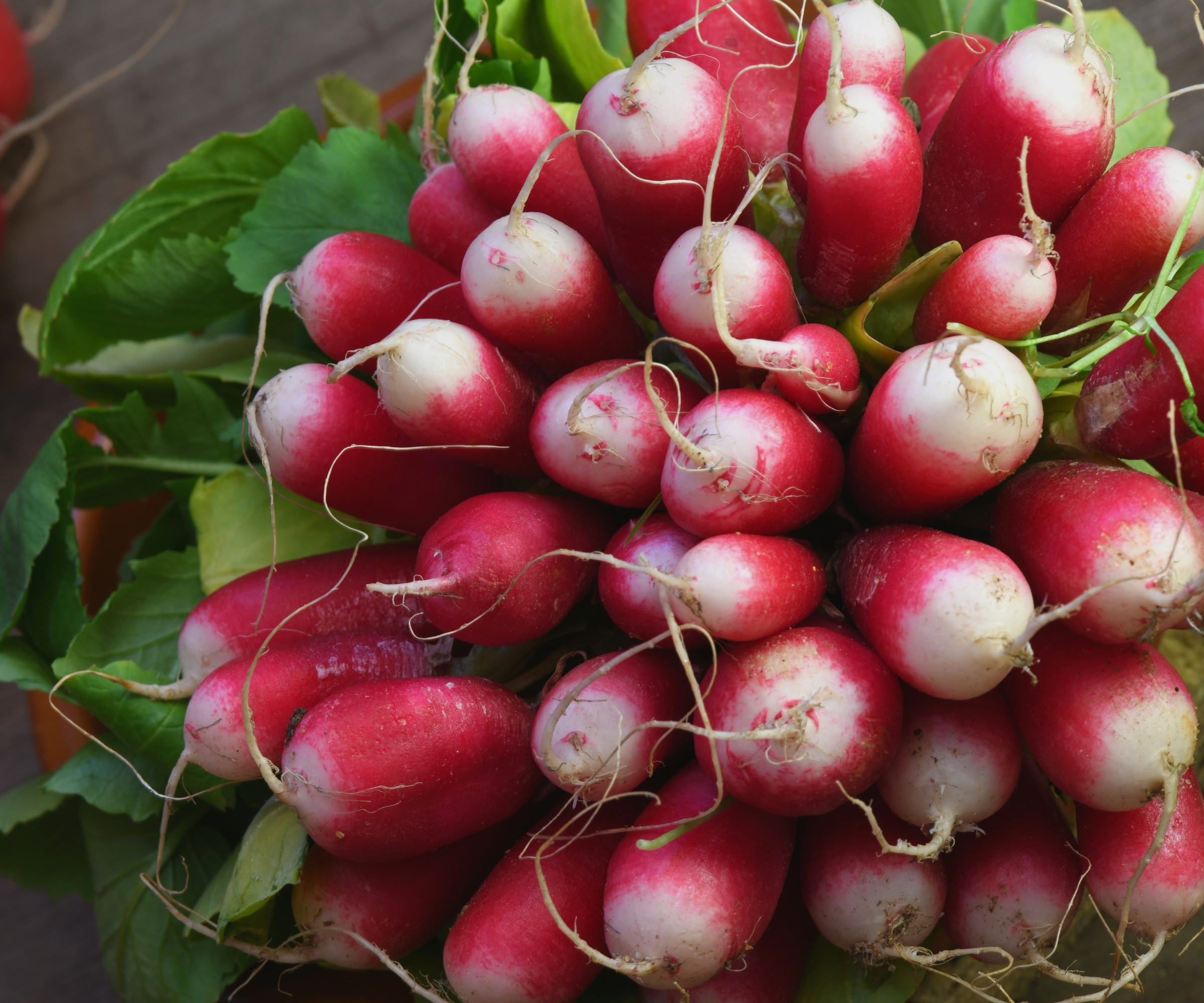
Radishes come in round and more elongated cone-shapes
- Aspect: Full sun to partial shade
- Pot size: at least 8 inches
- Harvesting period: Spring to fall
Radishes are one of the fastest growing vegetables and can go from sowing to harvest in under a month. Growing radishes allows you to try a range of colors, shapes, and flavors. Some varieties are short-rooted and can succeed even in shallow containers.
It is very simple to grow radishes in pots. Seeds should be sown thinly and then thinned out further until they are around an inch apart. The peppery roots – a common addition to salads – should be harvested when they reach an inch in diameter.
5. Carrots
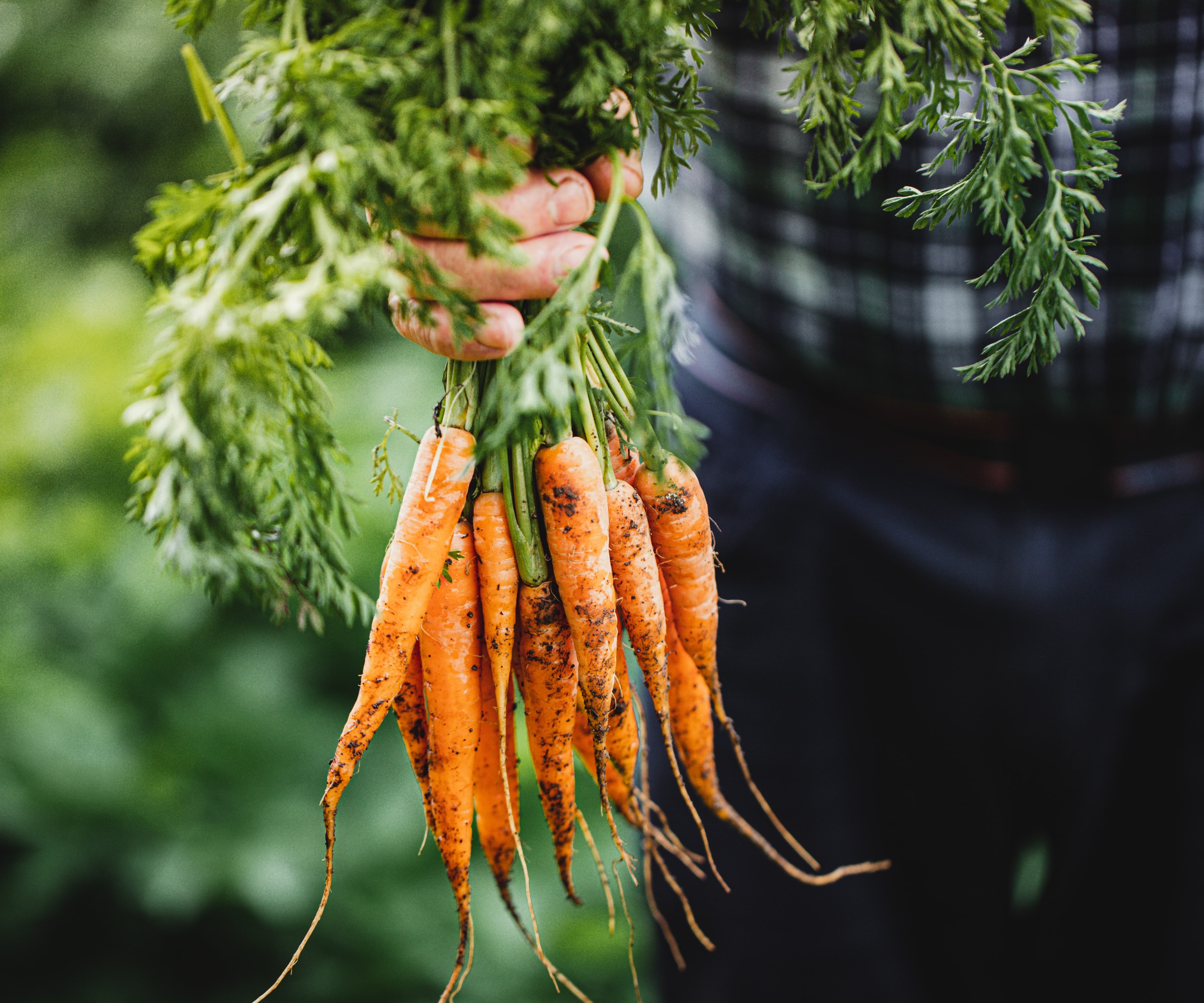
Check the expected length of carrots to ensure any pot is deep enough for the type
- Aspect: Full sun
- Pot size: At least 8 inches wide
- Harvesting period: Summer to fall
Carrots can be grown in large pots and there are two options available to home growers. There are rounded varieties of carrots that are perfectly-suited for pots, but pots with a depth of at least 18 inches allow for the growing of the traditional longer-rooted carrot varieties.
When growing carrots in pots, thinly sow the carrot seeds direct to the pot from mid-spring onwards and place them in a sunny spot. Water the container well and keep the soil moist throughout the season.
6. Peppers
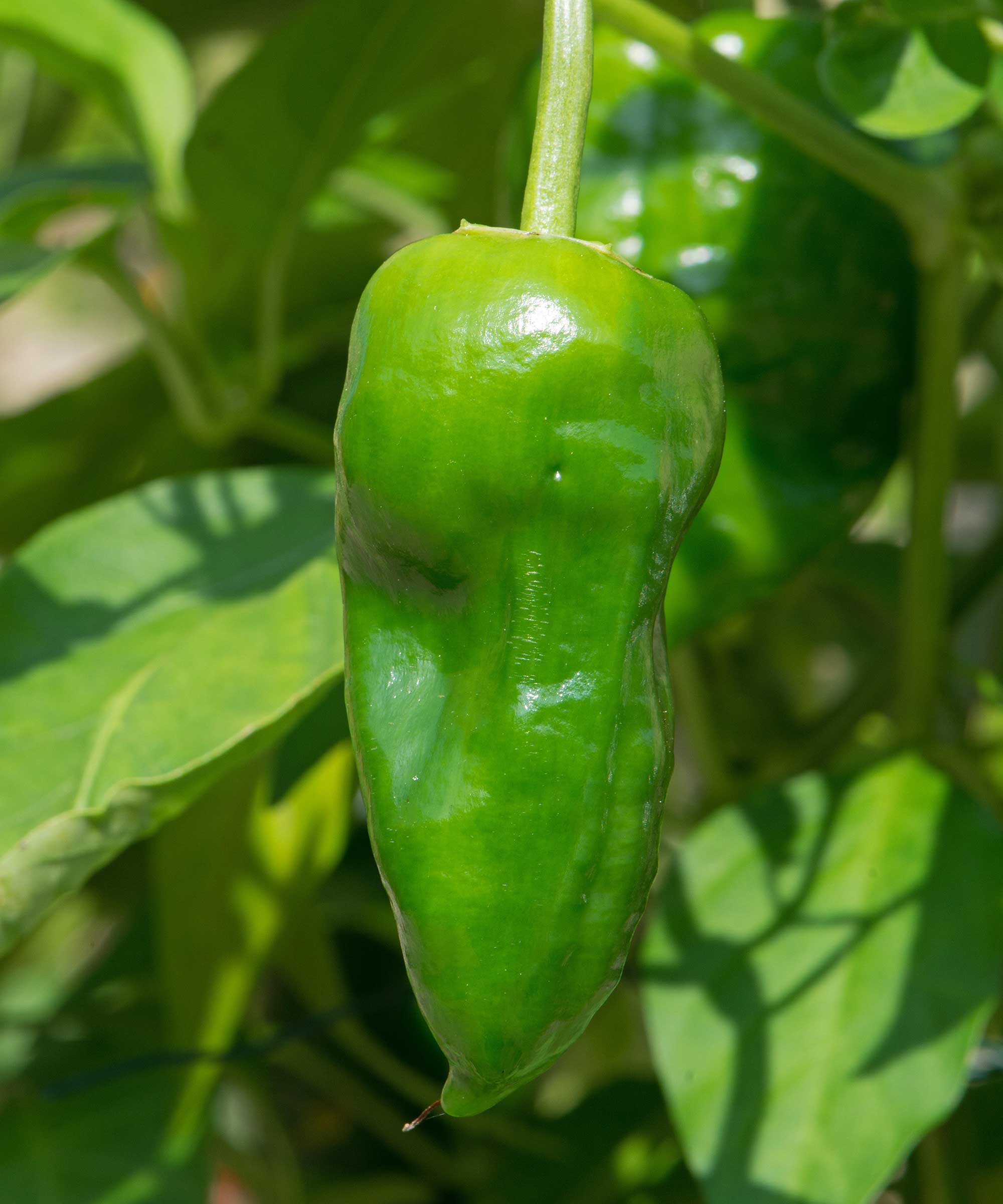
Padron peppers are small and mild types, often served whole in tapas
- Aspect: Full sun
- Pot size: At least 12 inches
- Harvesting period: Late summer onwards
Both bell peppers and chilli peppers can be grown in pots, opening up a world of sweet or fiery types of peppers in a range of shapes, colors, and sizes.
The key to growing peppers in pots successfully is to water plants regularly and keep them moist throughout the growing season. Peppers also benefit from a regular feed with a liquid tomato fertilizer when the first flowers appear.
7. Lettuce
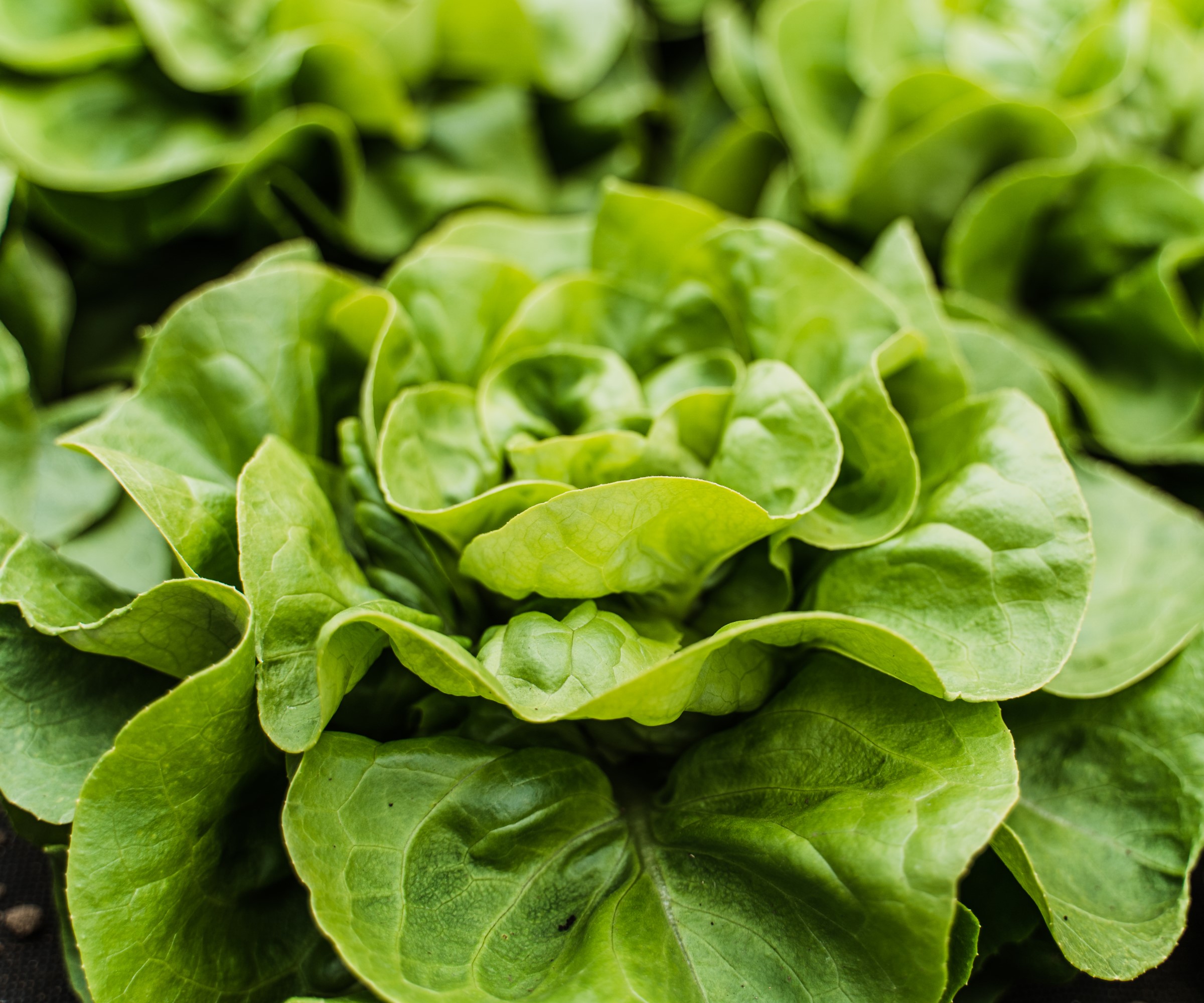
Lettuce grows quickly in pots and must be checked to make sure the soil does not dry out
- Aspect: Full sun or partial shade
- Pot size: At least 6 inches
- Harvesting period: Year-round
Lettuce is one of the easiest vegetables to grow in pots as it grows quickly and has shallow roots. The plants also benefit from being in pots as it is simple to protect them from being nibbled by pests, such as slugs.
To grow lettuce, sow the seed directly or buy plug plants and you can get a quick crop, and many varieties are cut-and-come-again so you can get multiple harvests off one plant. A mixture of lettuces in pots can also look beautiful as well as giving a range of textures and tastes for salads.
8. Cucumbers
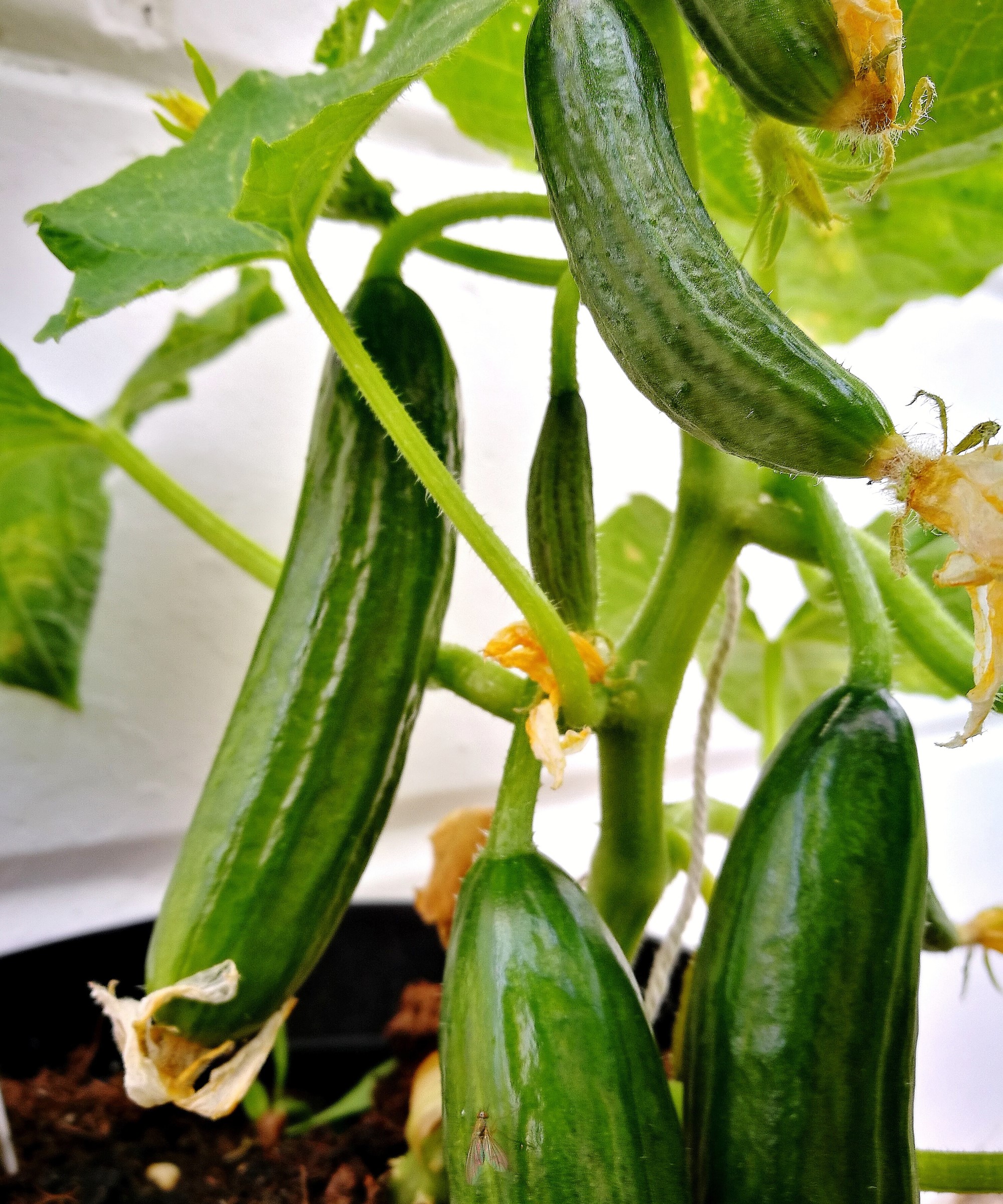
Cucumbers need large pots and a strong support to climb up
- Aspect: Full sun or partial shade
- Pot size: At least 18 inches
- Harvesting period: Summer
Both bush or vining types of cucumbers can be grown in pots, though vining varieties need larger pots for their extensive root system. Cucumbers will need support such as a trellis, netting, string, or cages to support them as they grow.
When growing cucumbers in pots, watering is important as they are hungry crops. They need to be kept constantly moist and picked regularly to ensure a steady cropping,
9. Chard
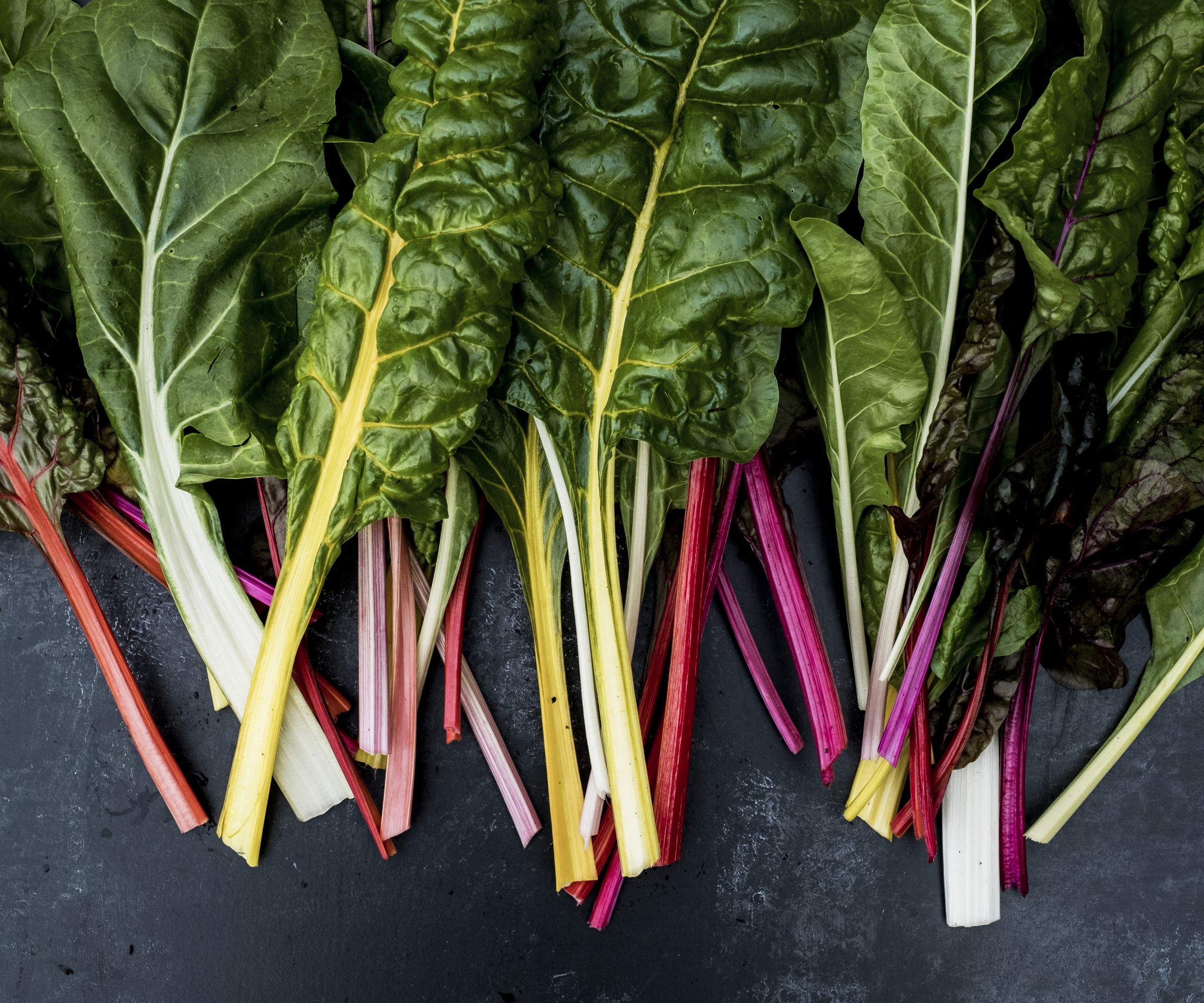
You can get packets of rainbow chard seeds that come in a mix of colors
- Aspect: Partial shade
- Pot size: At least 12 inches wide and 8 inches deep
- Harvesting period: Summer to late fall
Swiss chard is a crop that can provide you with a long harvest of leaves and, not only is it versatile in the kitchen, but it looks fantastic in a backyard. It comes in bright colors such as yellow, pink, and red and its leaves can be eaten when small or full size.
As swiss chard is only a shallow-rooting crop, it does not need a large pot in which to grow. Seeds can be sown directly into the pot or you can buy transplants to grow.
The time to harvest swiss chard is after around 30 days for small leaves and up to 60 days for mature leaves.
10. Tomatoes
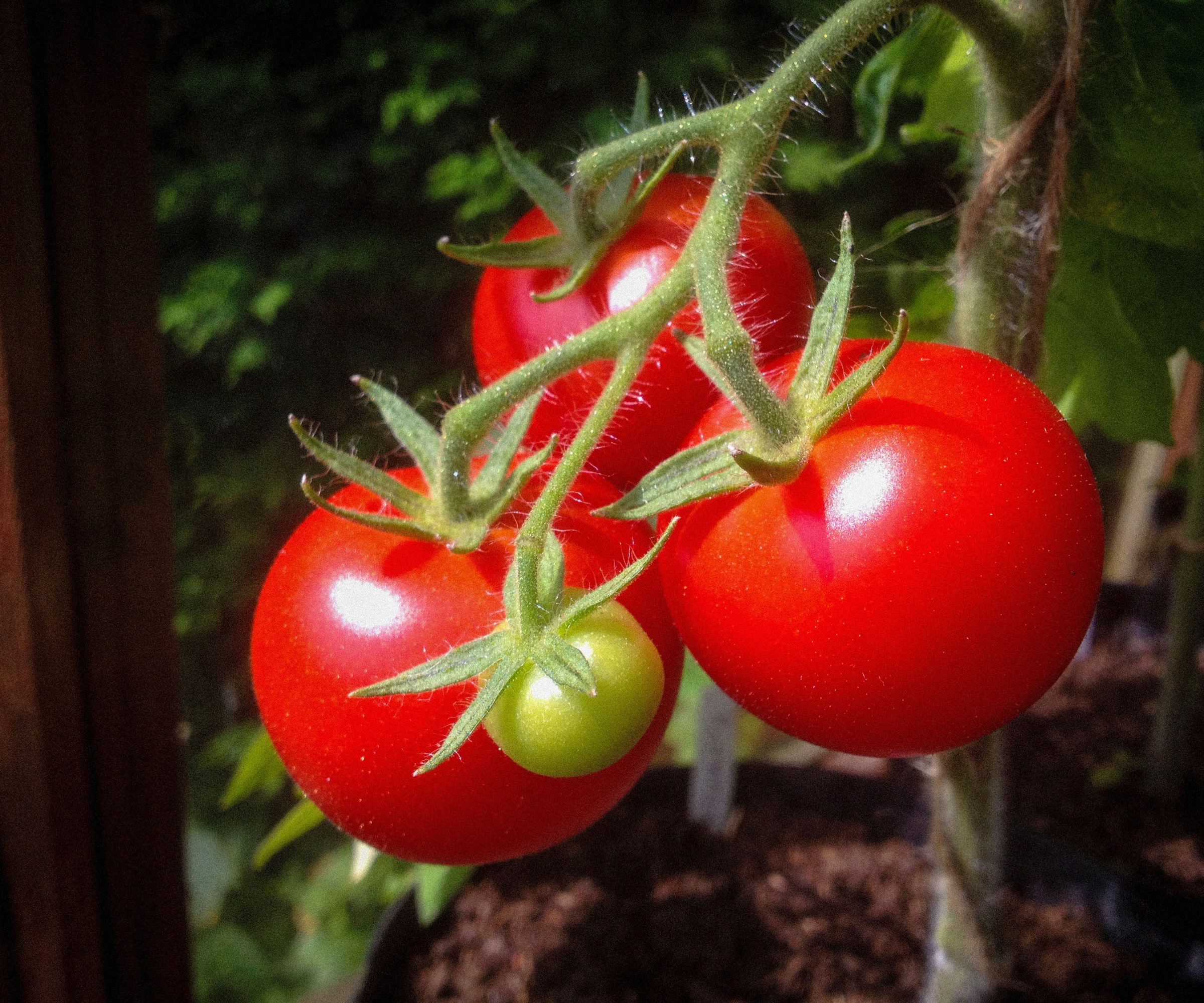
Tomatoes in pots like full sun and for the soil to be kept moist at all times
- Aspect: Full sun
- Pot size: At least 12 inches
- Harvesting period: Summer to early fall
Tomatoes are one of the most popular crops to grow in pots and there is a huge choice of colors, shapes, and sizes.
Most tomato varieties are suitable for growing in pots, though shorter bush types are preferable as they do not require staking or a cage.
Growing tomatoes in pots means regularly feeding and fertilizing the hungry plants in order to keep them healthy and producing fruit. Give them room to grow and a spot with as much sun as possible, around eight hours a day, and they will reward you will an abundance of delicious fruits.
11. Onions

Onions are planted or sown in Spring
- Aspect: Full sun
- Pot Size: At least 24 inches wide and 10 inches deep
- Harvesting period: Summer
Growing onions in containers is similar to growing them in the ground. For bulbing onions you need a wide and shallow pot in order to get a decent harvest of bulbs. You can either plant onion sets or sow onion seeds in pots to get bulbs come the summer. Onions do like a sunny spot and ideally want between six and eight hours of sunlight each day. As well as bulbing onions, bunching onions can also be grown in pots, to be sown directly into the soil in spring and harvested around eight weeks later.
12. Arugula

Arugula leaves are harvested once they get to three inches long
- Aspect: Full or part sun
- Pot Size: At least 8 inches
- Harvesting period: Late spring to fall
Arugula produces peppery leaves that are perfect for being added to salads or sandwiches, or can be an alternative in pesto. They are very fast-growing vegetables and you can get a first harvest within six weeks of sowing. It is a crop that can provide a long harvest, as regular pickings will encourage further growth. Arugula is a cool crop that is best planted in early spring or late summer, and can bolt during periods of hot summer weather.
FAQs
What is the best soil to grow vegetables in pots?
There are decisions to be made about what compost to fill your pots with when growing vegetables. Vegetable plants want a compost that is rich, fertile, and free draining to help them grow strong and healthy.
A good quality potting soil that is designed for use in containers would be ideal for growing vegetables in pots. An example of such potting soil is the Miracle-Gro Performance Organics All Purpose Container Mix available at Amazon.
You should always use fresh material as using soil from the garden is not recommended. It can often be heavy, hold too much water, and also contain soil-borne diseases that could cause problems for your new vegetable crops.
What winter vegetables can I grow in pots?
A vegetable container garden can grow crops all year round and one advantage of pots is that they can be moved around the yard, such as to a protected area to combat frosts.
Winter vegetables including cabbages, brussels sprouts, broccoli, leeks and kale can all be successfully grown in pots. When you are planning when to plant vegetables, consider successional planting as it is possible to get both a summer and winter vegetable harvest from your pots.
Most of the best vegetables to grow in pots are also easy vegetables to grow in pots. It means that even if you are short of growing space, you can get a fresh harvest of homegrown vegetables with little fuss.
There is always room for experimentation in gardening and that includes increasing how many vegetables you have in pots around your backyard or kitchen garden. Many are so simple and all you need is seeds, soil, a pot, and a bit of patience. Keep a close eye on watering, regularly feed plants, and reap the rewards come harvest time.
Sign up to the Homes & Gardens newsletter
Design expertise in your inbox – from inspiring decorating ideas and beautiful celebrity homes to practical gardening advice and shopping round-ups.

Drew’s passion for gardening started with growing vegetables and salad in raised beds in a small urban terrace garden. He has worked as a professional gardener in historic gardens and specialises in growing vegetables, fruit, herbs, and cut flowers as a kitchen gardener. That passion for growing extends to being an allotmenteer, garden blogger, and producing how-to gardening guides for websites. Drew was shortlisted for the New Talent of the Year award at the 2023 Garden Media Guild Awards.
-
 Sarah Jessica Parker's spring tablescape epitomizes lived-in luxury with art deco candle holders and a statement tablecloth – it's easy (and affordable) to recreate
Sarah Jessica Parker's spring tablescape epitomizes lived-in luxury with art deco candle holders and a statement tablecloth – it's easy (and affordable) to recreateKick off the season right with a warm table that invites guests into your home by emulating Sarah Jessica Parker's luxe and cozy scheme
By Sophie Edwards Published
-
 Designers say these are the 10 kitchen cabinet details to know about if you want to elevate your space
Designers say these are the 10 kitchen cabinet details to know about if you want to elevate your spaceIt's all in the details – the designer touches that make all the difference to your kitchen cabinets
By Karen Darlow Published